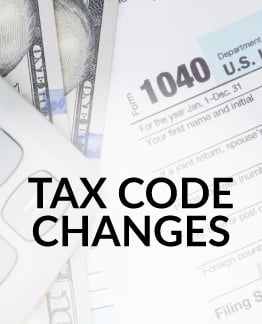
This is the fourth entry in a five-part series about changes to the U.S. tax code from the Tax Cuts and Jobs Act. Topics of the other articles include itemized deductions, exemptions, and child/dependent credits; mortgage interest deductions; miscellaneous itemized deductions; and qualified business income.
I don't know if anything makes my tax clients angrier than having to pay the Alternative Minimum Tax (AMT). The good news is the Tax Cuts and Jobs Act (TCJA) reduces the likelihood you will have to pay the AMT. This is due to a couple of reasons, but before we look at those reasons, let's quickly review what the AMT is.
The AMT has been around for several decades, and the objective of it is to make sure the “rich” pay their fair share. At its core, the AMT is very close to a flat tax. There are two tax brackets: 26 percent and 28 percent. And while the AMT is designed to make sure the “rich” pay, I've seen a lot of upper-middle class members paying the AMT. While many “preference items” get added back to your income when calculating AMT, for most my clients, they become subject to AMT because of two main reasons. The first is exemptions. Under the AMT regime, exemptions aren't allowed. The second reason is state and local income taxes. Like exemptions, state and local income taxes aren't deductible when calculating AMT.
Under the TCJA, there are no exemptions, so the lack of exemptions for calculating AMT is irrelevant. Similarly, state and local tax deductions are limited to $10,000. The limitation reduces the likelihood an individual in a high-tax state will get hit with an AMT tax bill. Additionally, as mentioned in the eliminated-deductions piece of this series, miscellaneous itemized deductions subject to the 2-percent floor no longer are deductible. They were also a preference item, which needed to be added back when calculating AMT.
But perhaps the biggest reason those who paid AMT in the past won't have to in the future is the increase - by around 30 percent - in the AMT exemption amount. For married taxpayers, the AMT exemption increases from $84,500 to $109,400. For single and head of household taxpayers, the AMT exemption increases from $54,300 to $70,330.
That doesn't mean you can ignore the AMT like some tax-preparation software will allow you to do. There still are a few areas where you need to pay attention. If you receive stock options as part of your compensation package, there might still be an AMT concern. Another reason to pay attention is if you have municipal bonds in your portfolio. Normally, interest on municipal bonds is tax-free. The one exception is under the AMT rules. The interest on private-activity municipal bonds, like those used to fund stadiums for use by professional sports teams, must be added back to income when calculating AMT. Finally, if you have investments in oil and gas partnerships, you might have AMT issues.
Overall, far fewer taxpayers will be subject to AMT due to the TCJA. But you do need to pay attention if your income is a little out of the “mainstream.”
